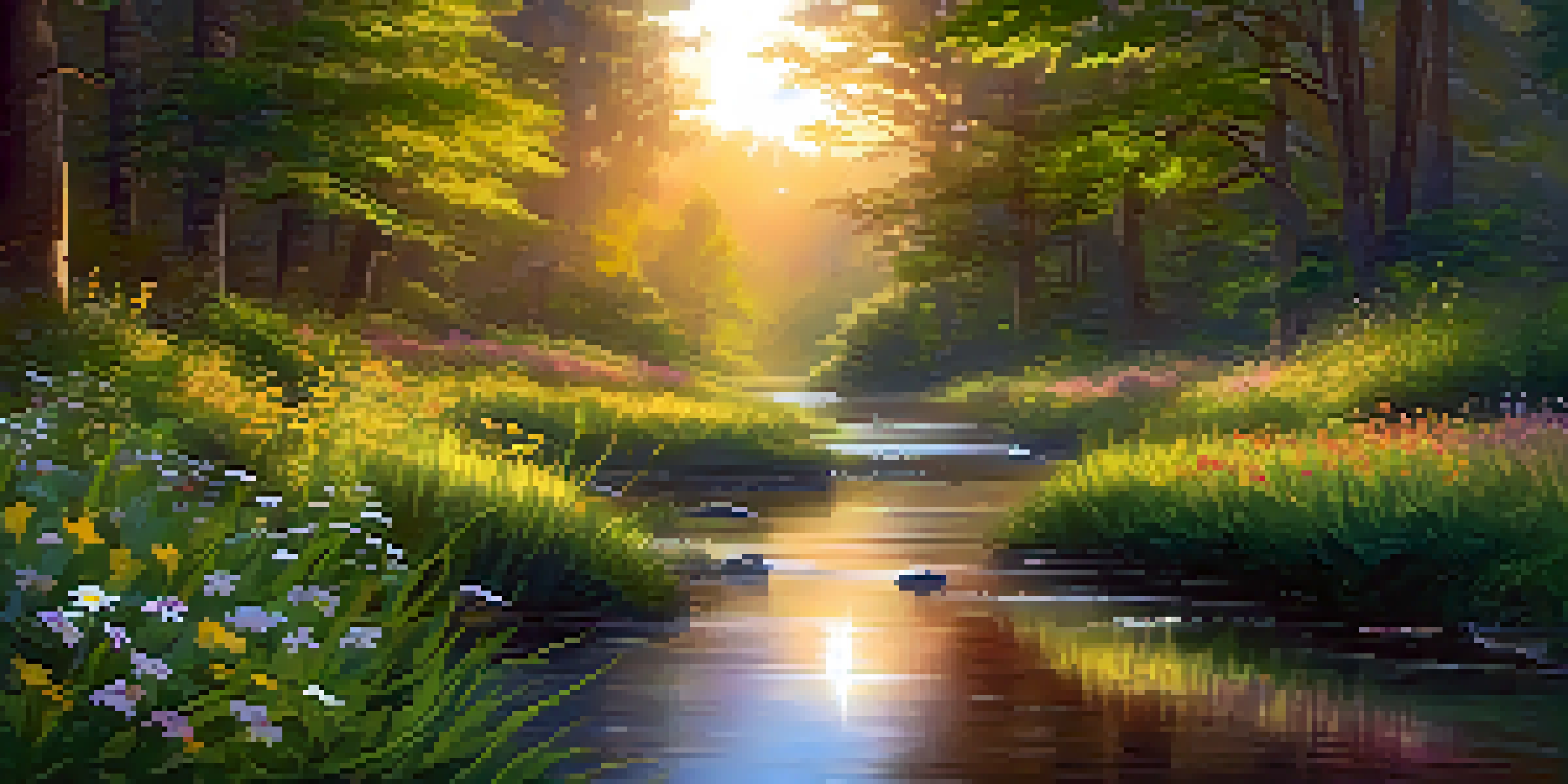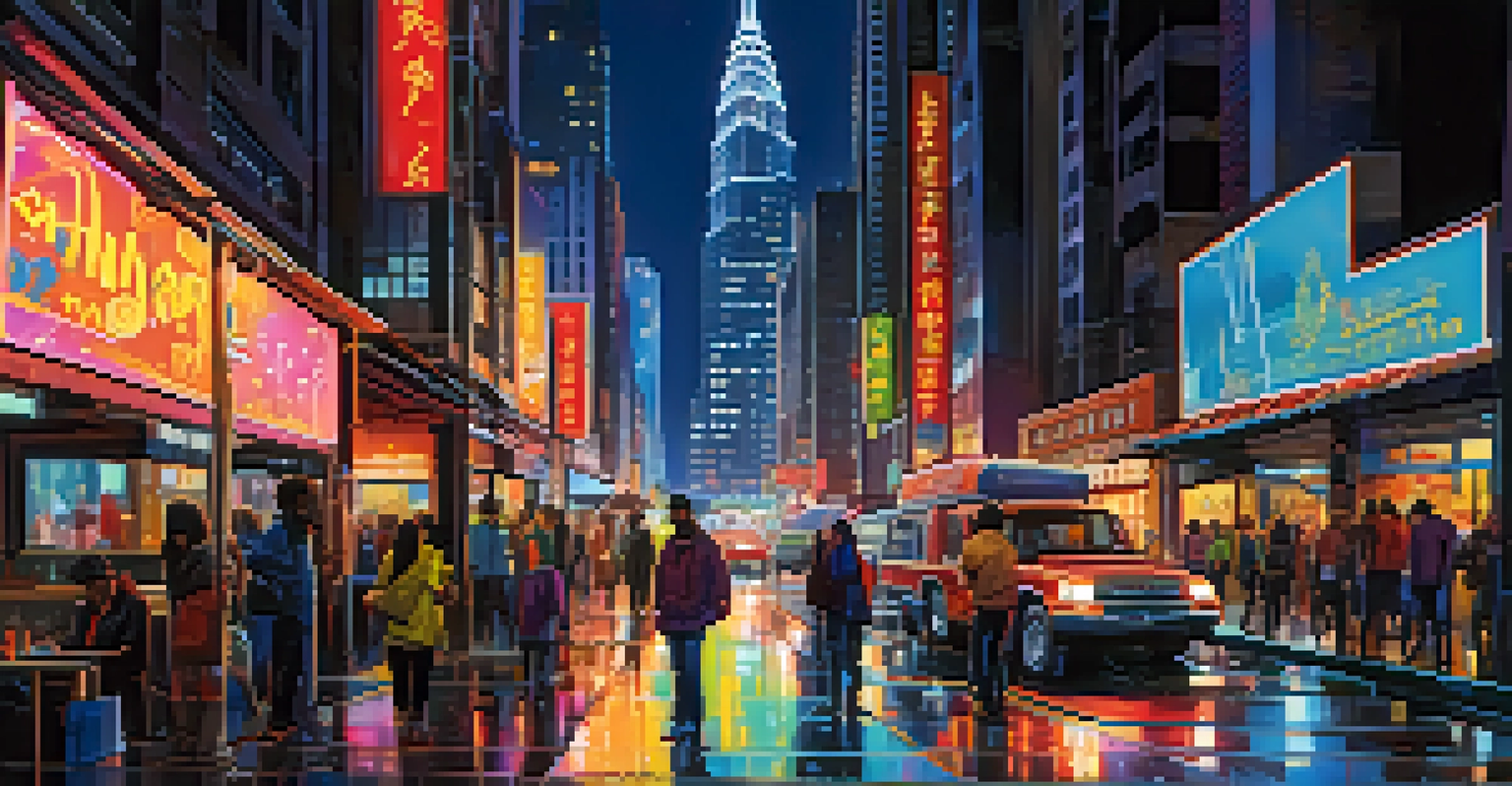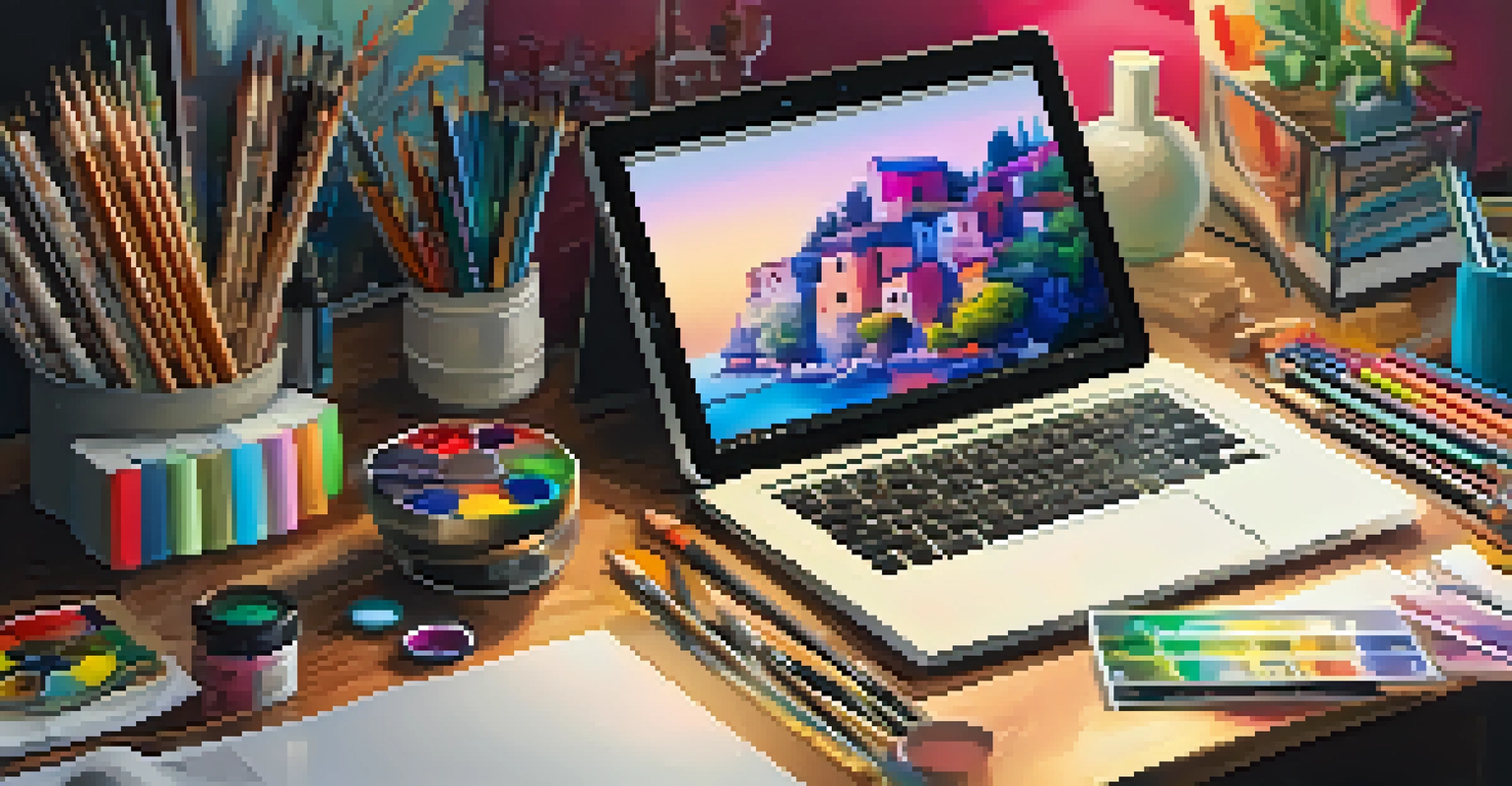Digital Art Mediums: Tools and Techniques for Modern Artists

Understanding Digital Art: A Brief Overview
Digital art encompasses a wide range of artistic practices that utilize digital technology as a primary medium. From graphic design to digital painting, artists are now able to express their creativity in ways that were unimaginable just a few decades ago. The beauty of digital art lies in its versatility and accessibility, allowing artists to experiment and innovate without the traditional constraints of physical materials.
Digital art is not a new medium, but it is a new way of thinking about the medium.
As the digital landscape evolves, so do the tools and techniques available to artists. Software applications like Adobe Photoshop and Procreate have revolutionized the way art is created, offering features that can simulate traditional painting, drawing, and photography. This shift not only broadens the horizons for artists but also invites collaboration across different artistic disciplines.
Related Resource
Moreover, digital art transcends geographical boundaries, allowing artists worldwide to share their work instantly through social media and online galleries. This interconnectedness fosters a sense of community and encourages the exchange of ideas, making it an exciting time for artists to explore this dynamic medium.
Essential Software Tools for Digital Artists
When it comes to creating digital art, the choice of software can significantly impact the artist's workflow and final output. Popular programs like Adobe Photoshop and Illustrator are staples in the industry, each offering unique features tailored for different styles of digital art. For instance, Photoshop excels in photo editing and digital painting, while Illustrator is perfect for vector graphics and illustrations.

In addition to these established tools, newer software like Procreate and Krita has gained popularity among artists for their user-friendly interfaces and robust functionalities. Procreate, specifically designed for the iPad, allows for intuitive touch gestures, making it a favorite among illustrators and concept artists. Meanwhile, Krita stands out as a free, open-source option that provides powerful tools for digital painting and animation.
Digital Art's Versatile Medium
Digital art allows artists to express creativity through various software tools, breaking traditional constraints.
As digital art continues to evolve, many artists are also exploring 3D modeling software, such as Blender and ZBrush. These programs open up exciting opportunities for creativity, allowing artists to create stunning visual effects and immersive experiences. The right software can inspire creativity and enhance an artist's ability to bring their vision to life.
Hardware Choices: Tablets and Computers for Artists
To fully harness the potential of digital art software, artists need the right hardware. Graphics tablets, such as those from Wacom or Huion, allow for precise control when drawing and painting digitally. These tablets can range from basic models to advanced options with screens that replicate the feel of traditional drawing.
The digital world gives us an incredible opportunity to create art that is accessible and global in its reach.
For those who prefer an all-in-one solution, devices like the iPad Pro with the Apple Pencil provide an excellent alternative. Many artists appreciate the portability and versatility of tablets, enabling them to create on the go without sacrificing quality. Additionally, the pressure sensitivity of these devices mimics real-life drawing tools, enhancing the overall experience.
Related Resource
It's also essential to consider the computer's specifications when working with digital art software. A powerful CPU and ample RAM can significantly improve performance, especially when working with complex projects or high-resolution files. Investing in good hardware can be a game-changer for artists looking to elevate their digital art practice.
Techniques: Exploring Digital Painting Methods
Digital painting techniques have evolved dramatically, allowing artists to replicate traditional methods while taking advantage of digital capabilities. One popular approach is layering, where artists build their artwork in separate layers, making it easy to edit or adjust elements without affecting the entire piece. This technique allows for greater control and flexibility in the creative process.
Another common method is the use of brushes and textures, which can simulate various traditional media, such as oil, watercolor, or chalk. Many software programs come with pre-installed brushes, but artists can also create custom brushes tailored to their unique style. This opens up endless possibilities for experimentation and creativity.
3D Art Expands Creative Horizons
The rise of 3D art and technology enables artists to create immersive experiences that blend artistry with innovation.
Furthermore, digital artists often utilize blending modes and adjustment layers to achieve desired effects and enhance their artwork's depth and vibrancy. These techniques not only enrich the visual quality but also allow for the seamless integration of different elements. As artists discover and refine their digital painting techniques, they can develop a signature style that sets their work apart.
3D Art: A New Dimension in Digital Creativity
The world of digital art has expanded beyond 2D creations, with 3D art emerging as an exciting frontier for modern artists. Using software like Blender or ZBrush, artists can sculpt, model, and animate their creations, adding depth and realism to their work. This shift towards 3D art allows for a more immersive experience, attracting both artists and audiences alike.
3D art is not limited to traditional artistic expressions; it also plays a significant role in industries such as gaming, animation, and virtual reality. Artists can create intricate environments, characters, and interactive experiences that captivate viewers and provide a sense of agency. The blend of artistry and technology presents endless opportunities for innovation in storytelling.
Related Resource
Moreover, the rise of 3D printing technology has enabled artists to bring their digital creations into the physical world. This exciting development allows for tangible representations of digital artwork, merging the realms of digital and traditional art. As artists continue to explore 3D art, they push the boundaries of creativity and redefine what it means to be an artist in the digital age.
Animation: Breathing Life into Digital Art
Animation is another fascinating dimension of digital art, allowing artists to infuse their creations with movement and storytelling. Software like Adobe After Effects and Toon Boom Harmony provides tools for animators to create engaging visuals that captivate audiences. Whether it's a short animated film or a simple GIF, the possibilities for creativity are virtually limitless.
Incorporating animation into digital art can enhance the overall experience and convey messages in a dynamic way. Artists can use techniques like frame-by-frame animation or motion graphics to create visually stunning sequences that draw viewers in. With the growing popularity of social media, animated content has become an effective way to communicate ideas and connect with audiences.
Animation Enhances Digital Storytelling
Incorporating animation into digital art adds movement and depth, enriching the viewer's experience and engagement.
As artists delve into the world of animation, they often discover new techniques and styles that further enrich their artistic practice. This exploration can lead to a deeper understanding of timing, movement, and visual storytelling, enabling artists to expand their skillset and push the boundaries of their creativity.
The Future of Digital Art: Trends to Watch
As technology continues to advance, the future of digital art holds exciting possibilities for artists and audiences alike. One trend to watch is the growing integration of artificial intelligence (AI) in the creative process. AI-powered tools are emerging that can assist artists in generating ideas, enhancing their workflow, or even creating artwork autonomously, sparking debates about the role of the artist in this new landscape.
Another notable trend is the rise of augmented reality (AR) and virtual reality (VR) in digital art. These immersive technologies allow artists to create experiences that engage viewers in ways that traditional media cannot. Imagine walking through a gallery where the artwork interacts with you or participating in a virtual world filled with stunning digital creations—this is the future that awaits us.

As we look ahead, the digital art community will likely continue to evolve, driven by innovation and creative exploration. Artists will find new ways to express their visions and connect with audiences, ensuring that digital art remains a vibrant and integral part of the artistic landscape.